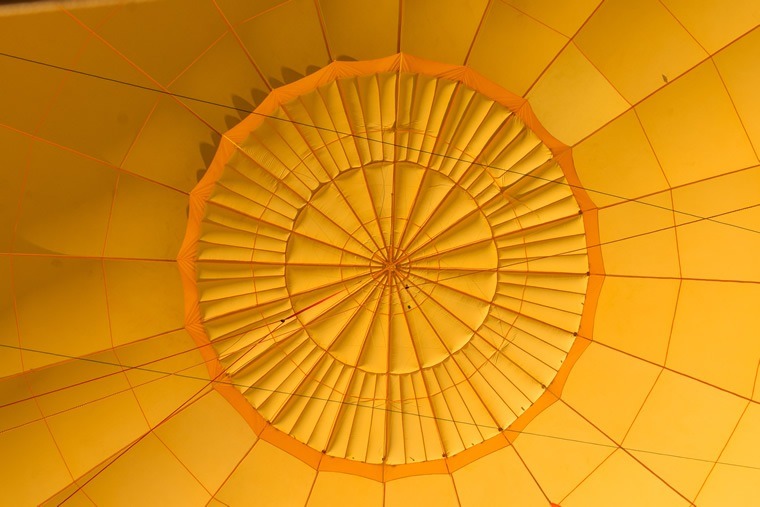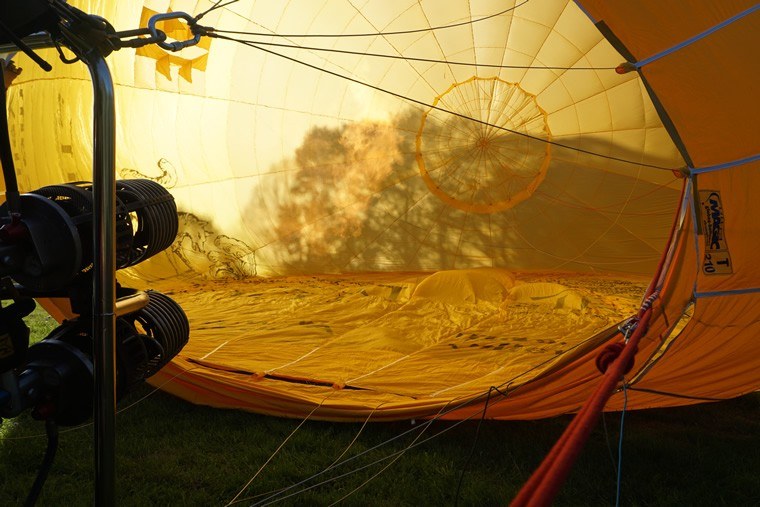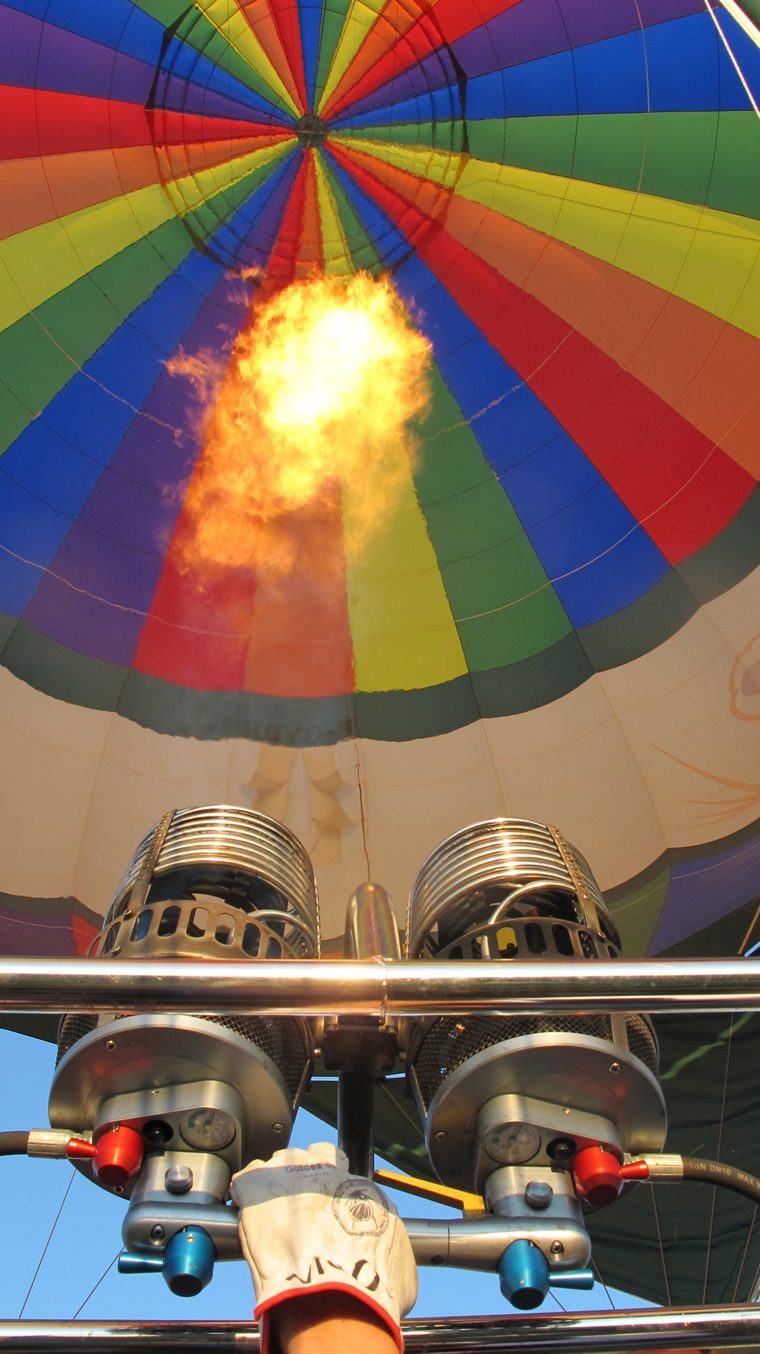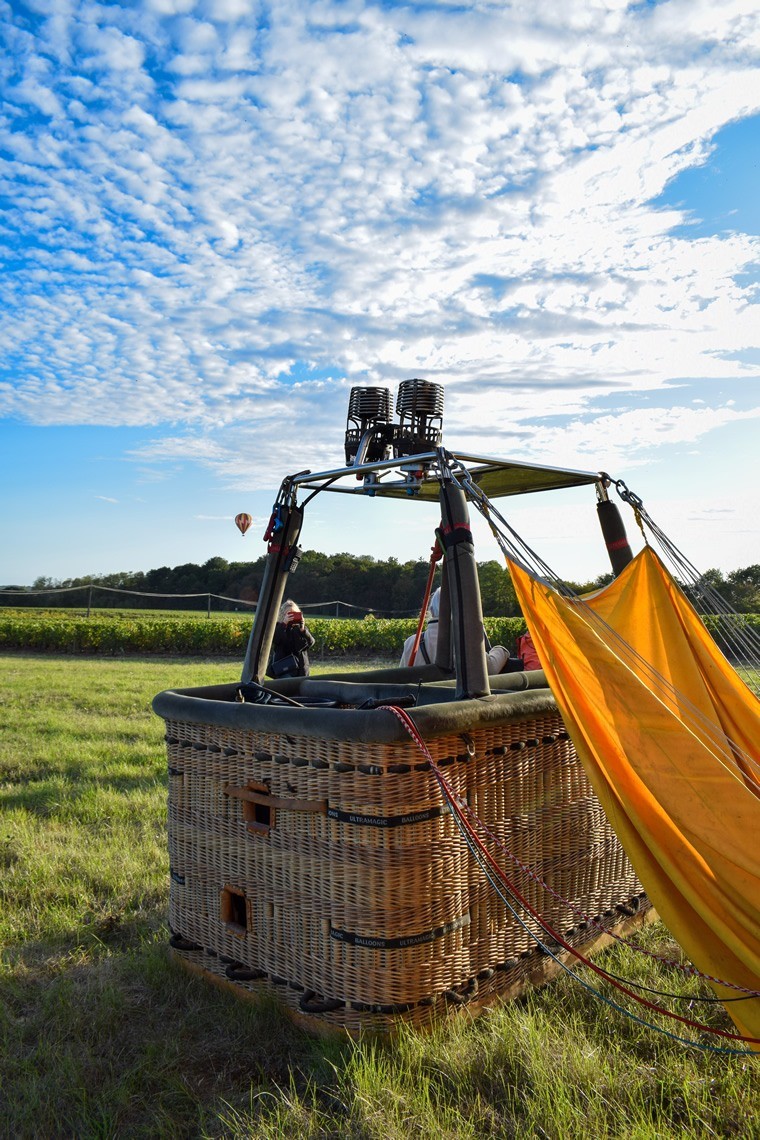Description of a balloon
A hot air balloon consists of three main elements: the envelope, the burner and the gondola.
The envelope
Its role is to keep the air heated by the burner inside the balloon. Its structure consists of horizontal and vertical straps forming a globe, on which are sewn treated nylon panels. All vertical straps are gathered at the top on a "crown" ring and repeated at the base by steel cables that attach to the "charge frame." The top of the envelope, which is open, is sealed from the inside by a removable circular panel, called a "parachute." The latter, under the thrust of the hot air, settles on the edge of the top of the envelope, thus ensuring its waterproofing. It can also act as a valve.

The volume of current hot air balloons ranges from 600 to 10,000 cubic metres, the most common being 2,200 cubic metres. During landing, the pilot opens the upper part of the balloon wide (the parachute panel as a valve), freeing up the warm air in the envelope. The balloon deflates and gently lays on the ground. While most envelopes have a standard balloon shape, others are designed to look like animals, cartoon characters and other fun objects.

The burner
It allows the balloon to be inflated with propane cylinders, usually one to two by balloon. It delivers a flame precisely directed 3 to 6 meters high inside the envelope through the open bottom, the "mouth." Placed on the charge frame, the burner is steerable.

The basket
Its braided wicker and rattan construction gives it robustness, flexibility and lightness, protecting the crew from impact on landing.









